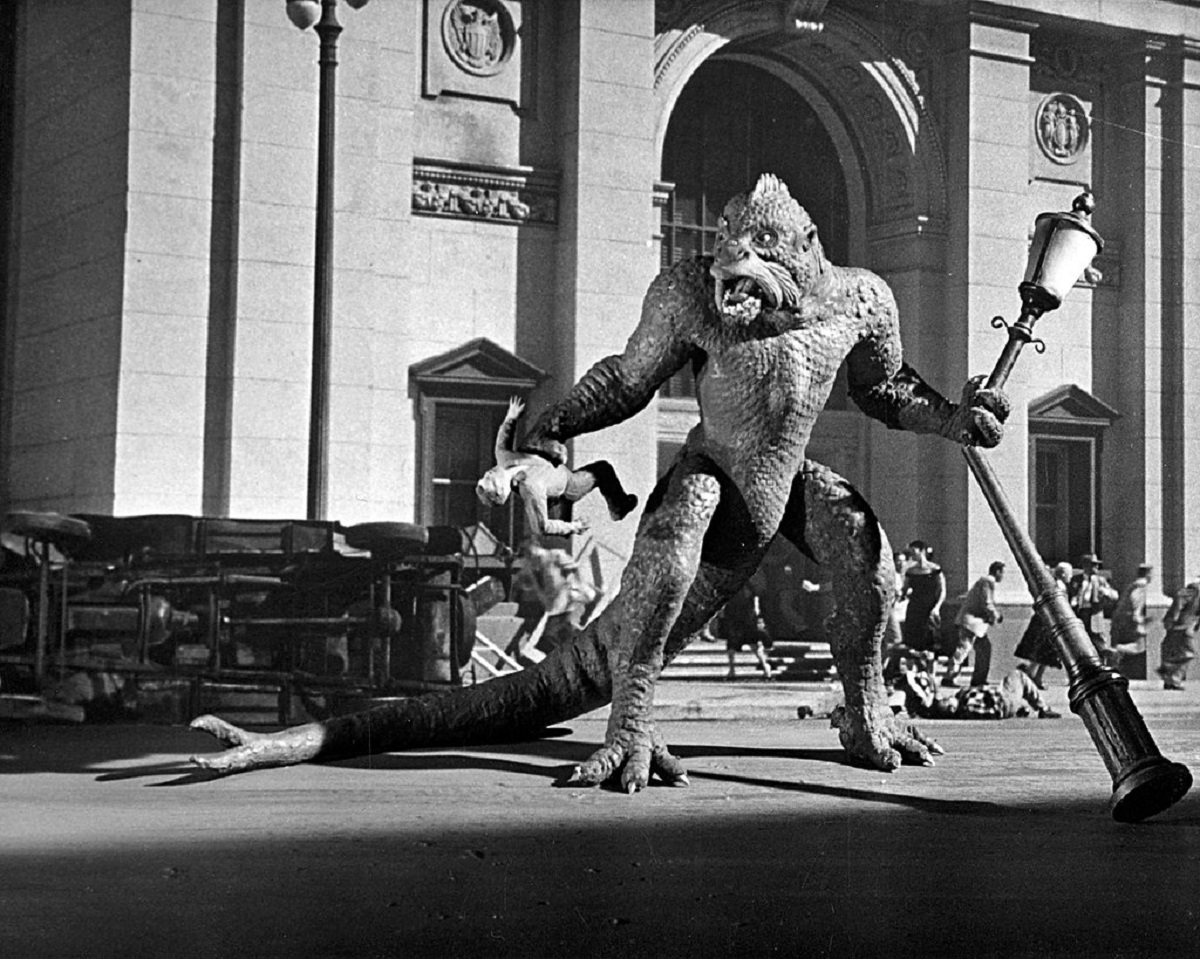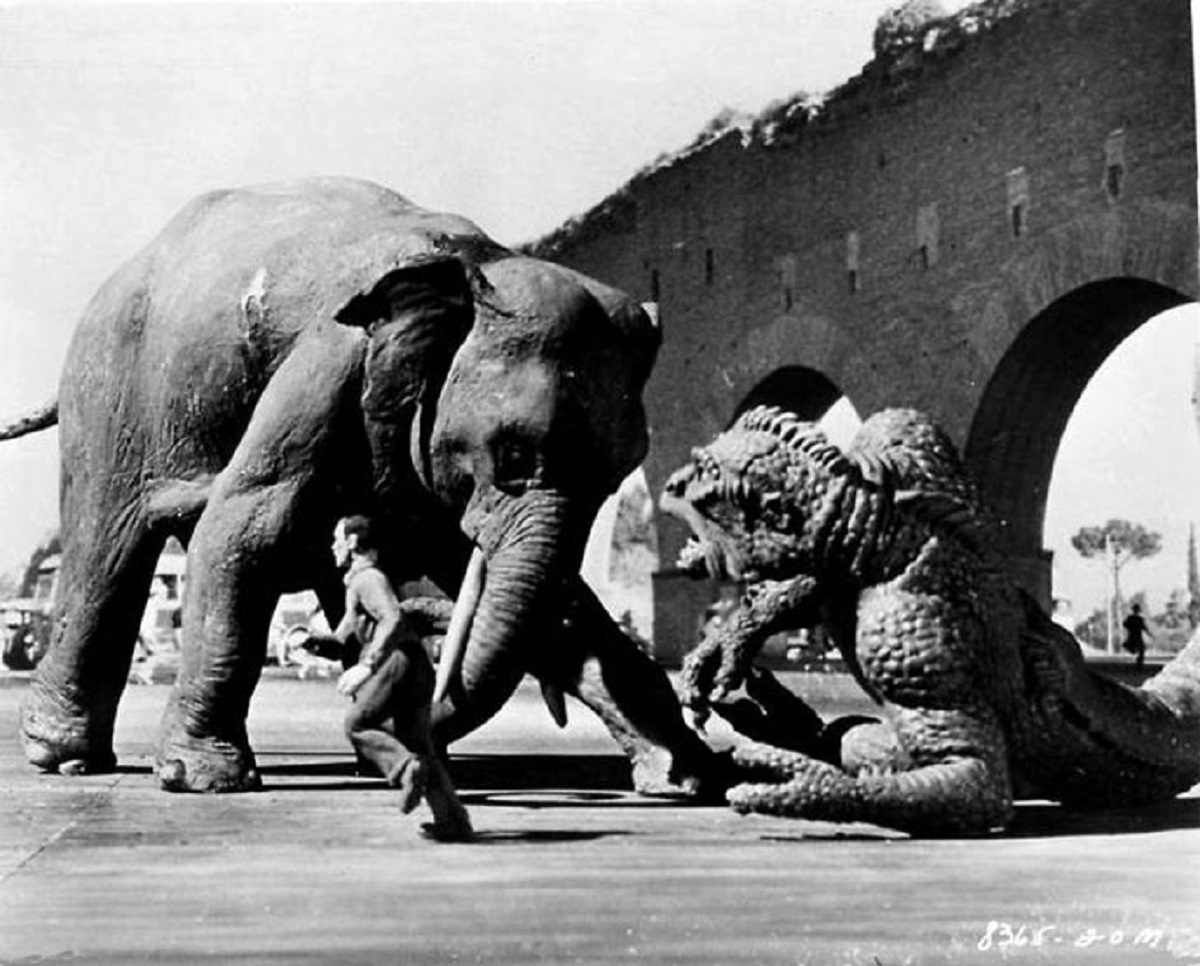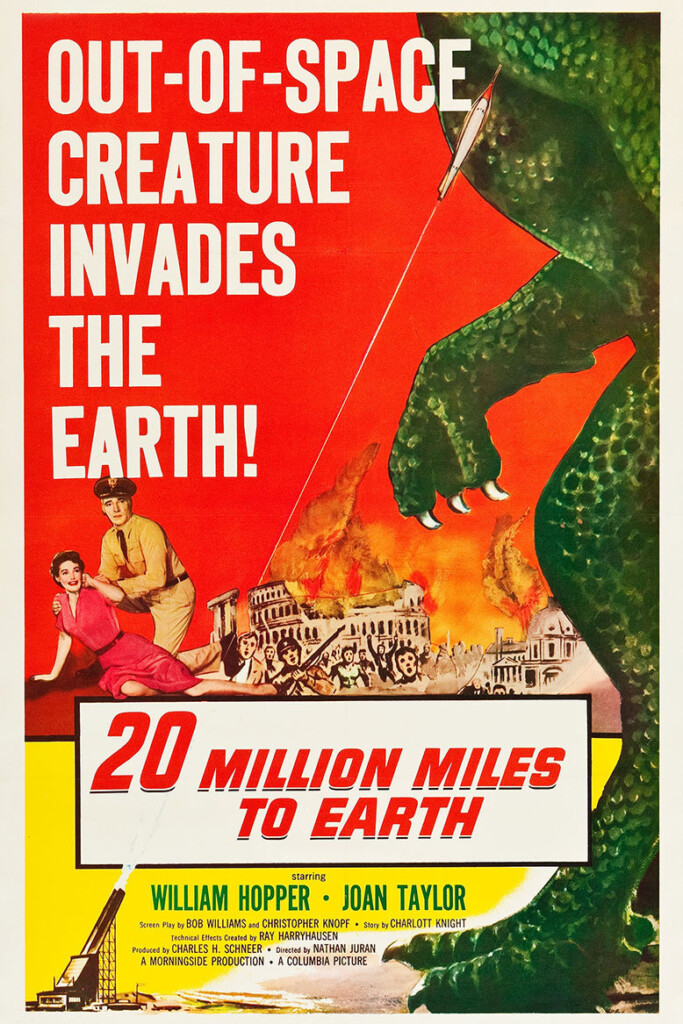USA. 1957.
Crew
Director – Nathan Juran, Screenplay – Christopher Knopf & Bob Williams, Story – Charlott Knight, Producer – Charles H. Schneer, Photography (b&w) – Irving Lippman, Music – Mischa Bakaleinikoff, Technical Effects – Ray Harryhausen, Art Direction – Cary Odell. Production Company – Morningside Pictures.
Cast
William Hopper (Colonel Bob Calder), Joan Taylor (Marisa Leonardo), Thomas Browne Henry (General McIntosh), Frank Puglia (Dr Leonardo), Bart Bradley (Pepe), Jan Arvan (Contino), George Khoury (Verrico), Don Orlando (Mondello), John Zaremba (Dr Uhl), Tito Vuolo (Commissario)
Plot
An American rocketship returning from Venus crashes in the sea off the coast of the small Sicilian fishing village of Gerra. The local fishermen rescue two survivors. Meanwhile, a young boy Pepe finds a specimen container that has a pod inside it and sells it to biologist Dr Leonardo. The pod soon hatches into a reptilian creature. The creature rapidly grows in size and is soon threatening livestock and people. The American military succeed in capturing the creature. However, in Rome, it escapes captivity and rampages through the city.
20 Million Miles to Earth is one of the early films from cult stop-motion animator Ray Harryhausen. Harryhausen had had great success with The Beast from 20,000 Fathoms (1953), which started the atomic monster fad of the 1950s. He then went onto create the giant atomic octopus film It Came from Beneath the Sea (1955), gained strength with the alien invader film Earth Vs. the Flying Saucers (1956) and then blossomed with 20 Million Miles to Earth. 20 Million Miles to Earth was also Harryhausen’s first pairing with director Nathan Juran with whom he would next make his all-time classic The 7th Voyage of Sinbad (1958) and later The First Men in the Moon (1964).
All of Ray Harryhausen’s early films (mentioned above) are monster or alien invader movies – and in the case of 20 Million Miles to Earth both. Perhaps signifying an underlying thematic connection of 1950s science-fiction films, monsters and alien invaders are interchangeable as threats in these early Harryhausen films. (With The 7th Voyage of Sinbad, Harryhausen would abandon social threats and discover mythic adventure, which would thereafter become his predominant thematic interest).
These early Harryhausen films often give the impression of having been conceptually constructed around a set-piece in which the particular menace of the show threatens a famous landmark – the rhedosaurus trampling New York and Coney Island in The Beast from 20,000 Fathoms; the octopus tearing down the Golden Gate Bridge in It Came from Beneath the Sea; the alien invaders trashing various Washington D.C. landmarks in Earth Vs the Flying Saucers.


This certainly true in the case of 20 Million Miles to Earth. The entire film has been construed around the Ymir (although the creature is never named such in the film) being shot down at The Coliseum. (This does at least make for one of the few occasions in 1950s science-fiction where a country other than the USA gets invaded).
Ray Harryhausen’s effects are highly impressive. These represent the blossoming of him as an animator from the point he was merely creating monsters to where he started to craft them into characters. There are some excellent scenes with The Ymir fighting a dog and battering a farmer – 20 Million Miles to Earth is a surprisingly violent film in some regards. The film’s great set-piece is the Ymir’s fight with an elephant in the streets of Rome and the shootout with the Army atop The Coliseum. It is a magnificent effects set-piece. Here you can measure as the point that Ray Harryhausen started to move beyond merely being a special effects man and became an artist.
Ray Harryhausen’s other films are:– The Beast from 20,000 Fathoms (1953), the granddaddy of all atomic monster films; the giant atomic octopus film It Came from Beneath the Sea (1955); the alien invader film Earth Vs. The Flying Saucers (1956); The 7th Voyage of Sinbad (1958); The 3 Worlds of Gulliver (1960); the Jules Verne adaptation Mysterious Island (1961); the Greek myth adventure Jason and the Argonauts (1963); the H.G. Wells adaptation The First Men in the Moon (1964); the caveman vs dinosaurs epic One Million Years B.C. (1966); the dinosaur film The Valley of Gwangi (1969); the two Sinbad sequels The Golden Voyage of Sinbad (1973) and Sinbad and the Eye of the Tiger (1977); and the Greek myth adventure Clash of the Titans (1981). Ray Harryhausen: Special Effects Titan (2011) was a documentary about his work.
Nathan Juran’s other genre films are:– the historical horror film The Black Castle (1952), the giant bug film The Deadly Mantis (1957), Ray Harryhausen’s The 7th Voyage of Sinbad (1958), the classic bad films The Brain from Planet Arous (1957) and Attack of the 50 Foot Woman (1958), Jack the Giant Killer (1962), the Ray Harryhausen film The First Men in the Moon (1964) and The Boy Who Cried Werewolf (1973).
Trailer here


